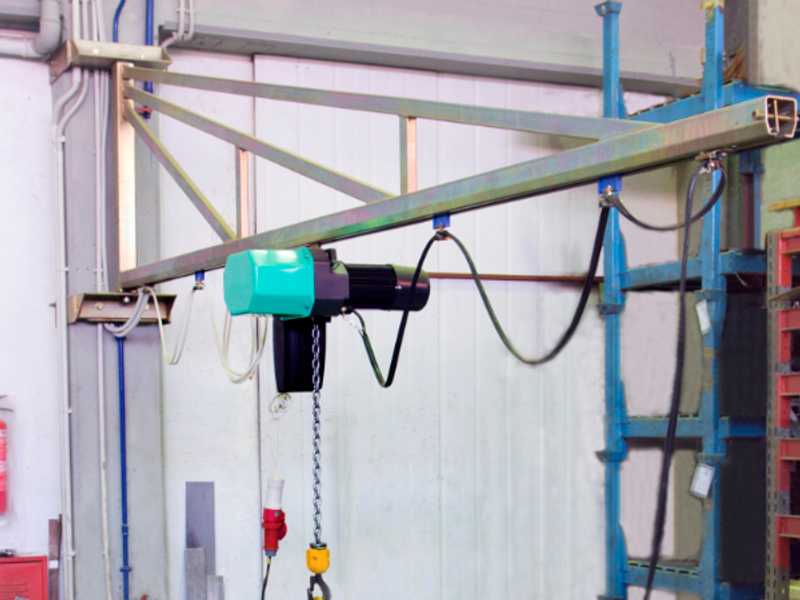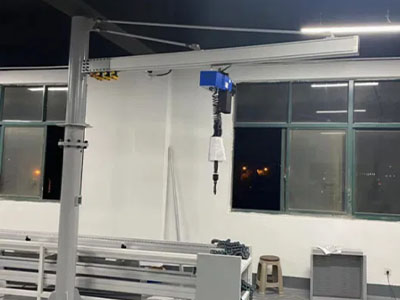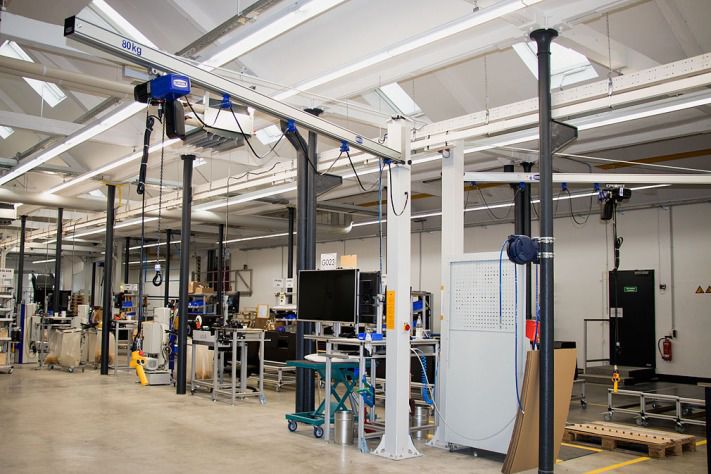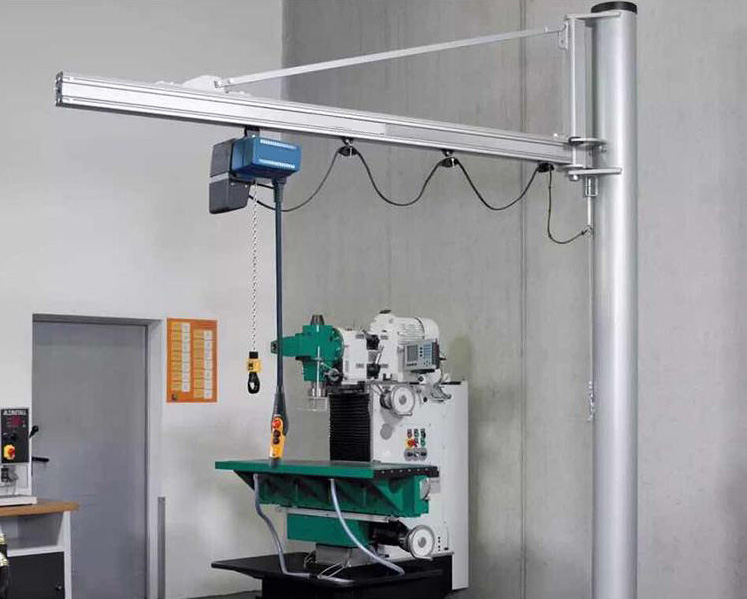Aluminum Wall Mounted Workstation Jib Crane
Wall mounted jib cranes are efficient, flexible material handling equipment that are widely used in a variety of workplaces, especially in environments where space is limited or heavy objects need to be moved frequently. Aluminum wall mounted workstation jib cranes are favored by many industries for their lightness and corrosion resistance. The working principle of an aluminum wall mounted workstation jib crane is relatively simple. When heavy objects need to be transported, the operator controls the electrical control system to rotate the jib to the appropriate position, and then operates the lifting device to perform lifting operations. The lifting device is connected to the heavy object through a wire rope or chain, and the heavy object is raised and lowered through the forward and reverse rotation of the motor. After the heavy object is transported to the designated location, the operator controls the swing arm to rotate back to its original position to complete a transport task.

Composition structure
● Jib: It is the core component of the crane. It is usually made of aluminum alloy material and has the characteristics of light weight, high strength and good corrosion resistance. The swing arm is driven by bearings and motors and can rotate freely in the horizontal plane to achieve all-round work coverage.
● Lifting device: including electric hoist or manual hoist, used for lifting and carrying heavy objects. Electric hoists have the advantages of easy operation, smooth lifting and high efficiency, while manual hoists are suitable for non-power supply or lightweight handling tasks.
● Support structure: It is the part that fixes the jib crane to the wall or other structure. It is usually composed of aluminum alloy profiles and connectors. The support structure needs to have sufficient strength and stability to ensure the safe operation of the crane.
● Electrical control system: used to control the rotation of the jib and the lifting of the lifting device. It usually consists of a motor, a control box, cables, etc. The control system has safety functions such as overload protection and limit protection to ensure the safety of the crane during operation.
Design Features
● The wall mounted design can achieve efficient material handling in a limited space, and is especially suitable for compact places such as workshops and warehouses.
● The rotation of the jib and the lifting of the lifting device can be precisely controlled through the electrical control system. The operation is simple and flexible, and can be adapted to various complex handling needs.
● Safety is fully considered in the structural design, and high-strength materials and advanced production processes are used to ensure the stability and reliability of the equipment during operation. At the same time, the electrical control system also has a variety of safety protection functions, which effectively avoids safety hazards during operation.
● Aluminum materials have good corrosion resistance and are not easy to rust, reducing maintenance costs. In addition, the crane's structural design is reasonable and easy to disassemble and assemble, making it convenient for daily maintenance and upkeep.

How to install
● Determine the installation location: Determine the installation location of the jib crane based on the workstation layout and material handling needs. Make sure the installation wall is flat, solid and able to bear the weight of the jib crane.
● Prepare installation tools: Prepare required installation tools, such as screwdrivers, electric drills, wrenches, etc.
● Install the bracket: Fix the bracket of the jib crane on the wall, and use screws or expansion bolts to securely fix the bracket to the wall.
● Install the swing arm: Connect the swing arm to the bracket to ensure that the swing arm can rotate smoothly, and adjust the angle and height of the swing arm to meet work needs.
● Install electrical components: According to the electrical requirements of the jib crane, install the corresponding electrical components, such as motors, controllers, etc. Make sure the wiring of electrical components is correct, safe and reliable.
● Debugging and testing: After completing the installation, debug and test the jib crane to ensure that all components are working properly, the jib can rotate smoothly, and the electrical components function normally.




